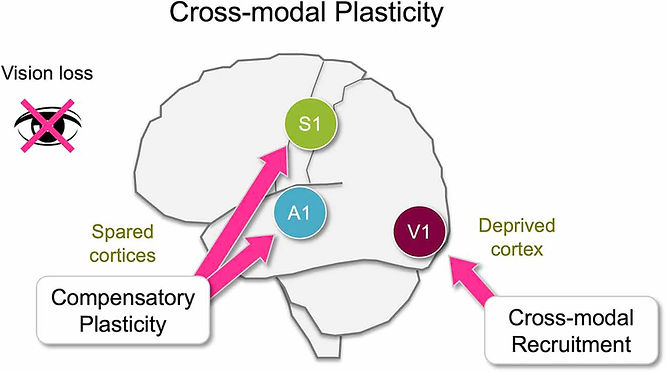What is Phantom Sense in VR? The Neuroscience of Virtual Sensations
Reference: Virtual Girl Nem

🔎 The Inside Scoop: Why We Handpicked This Article for Repost When it comes to virtual reality (VR), many people may think of it as an intangible and insensate experience, only capable of delivering visual impact. Nevertheless, many VR users have reported experiencing changes in temperature and even tactile sensations during social interactions within the virtual world. This fascinating phenomenon has sparked discussions in the field of neuroscience, yielding new academic findings. (By VIVERSE Editorial Team)
With the rise of social VR, many VR users are reporting and discussing the sensations that would not naturally occur, i.e., the “VR sensation” or “phantom sense.” What exactly is it? This article will explore its definition, how people can experience it, types of sensations, and current theoretical hypotheses.
Despite ongoing efforts towards a comprehensive study, it is said that the brain mistakes the avatar’s body for the real body, leading to phantom sense in virtual reality. Essentially, this phenomenon can be explained with cognitive psychology terms such as “cross-modal perception” and “synesthesia.”
If the brain perceives this sensation, then is it no longer just an “illusion”? As we venture into the VR era, what exactly is our brain beginning to perceive?
The definition of VR sensation and phantom sense
The phenomenon where various sensations other than sight and sound (which are originally not supposed to be felt) are pseudo-perceived during virtual reality experiences, is commonly referred to as “VR sensation” or “phantom sense.”
This field is yet to be studied thoroughly, and the definition of VR sensation has not been clearly established at this point.
The differences between “VR sensation” and “phantom sense”
The differences between “VR sensation” and “phantom sensation” are often blurred, but strictly speaking, they have the following distinctions:
VR Sensation
Virtual reality primarily reproduces visual and auditory experiences, but users pseudo-perceive various sensations beyond those. It refers to the general phenomenon where users feel various sensations in virtual reality experiences, not just limited to sight and sound. This term focuses on “Virtual Reality” and was coined by social virtual reality users.
Phantom Sense
Besides the sensations we perceive in virtual reality as avatars, it is more commonly related to sensations of body parts that do not physically exist in real life. Deriving from the term “phantom limb sensation” (PLS), phantom sense most commonly occurs to those who experience “phantom pain” where pain is felt in missing limbs after amputation.
What are the existing types of VR sensations?
A significant number of users on social VR platforms, particularly in VRChat, have reported experiencing what is commonly referred to as “VR sensation” or “phantom sense.” In 2023, Nem and Mila conducted a large-scale survey targeting social VR users, with approximately 2,000 respondents, unveiling two notable phenomena in the process.

(Source: Social VR Lifestyle Survey 2023 by Nem and Mila)
Numerous users have encountered phantom senses in VR, yet notable variations in sensitivity emerge depending on the specific types of sensations. While sensations of falling (71%) and touch (43%) are relatively easy to feel, taste (8%) and smell (17%) are less likely perceived.

(Source: Social VR Lifestyle Survey 2023 by Nem and Mila)
Sensations are often more perceptible in avatar body parts that are prominently positioned within the field of view, with the face (67%) and hands (41%) being notable examples.
Some users have even reported feeling tactile sensations such as the touch of avatars’ “tails” or “cat ears,” which do not physically exist on the human body.
Unveiling the science behind “VR sensations”
1. Cross-modal Perception Phenomena
In cognitive psychology, the phenomenon where different senses influence or interact with each other is called “cross-modal perception phenomena.” For example, seeing the color red (visual) might evoke the taste of strawberries (gustatory). Similarly, VR sensation can be seen as the visual and auditory to tactile sensation version of this phenomenon in virtual reality. This sensation is not exclusive to VR users, almost everyone could experience it to some extent.

(Reference: Cortical and Subcortical Circuits for Cross-Modal Plasticity Induced by Loss of Vision)
2. Synesthesia
Unlike “cross-modal perception phenomena,” which typically refers to the phenomenon that arise through experience, “synesthesia” is often used to describe innate senses.
In fact, it involves the activation of related areas in the brain, and the brain truly experiences those sensations.

(Reference: Hearing Sounds and Seeing Colors: Cross-Modal Synesthesia)
For example, many people associate the letter A with the color red, while some perceive the number 0 as black. This indicates that specific characters are often associated with specific colors.
In summary, the emergence of the “VR sensation” or “phantom sense” in social VR reflects a fascinating intersection of cognitive psychology and technology. Users report various sensations beyond sight and sound during VR experiences, challenging our understanding of perception. The distinction between “VR sensation” and “phantom sense” highlights the complexity of these experiences. Further research promises to deepen our understanding of the brain’s response to immersive technologies.
This post was originally published on VR感覚(ファントムセンス)とは何か? その定義と原理について
✍️ About Virtual Girl Nem

Japanese VTuber (Virtual YouTuber), Writer, Singer. Researching the culture of the Metaverse. The world’s oldest independent VTuber.
Learn more: https://medium.com/@nemchan_nel/about